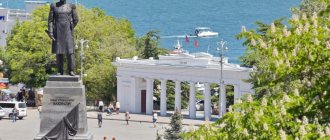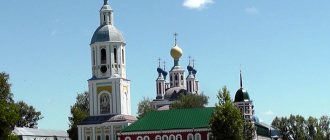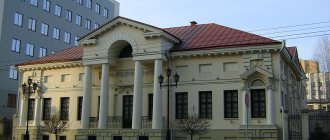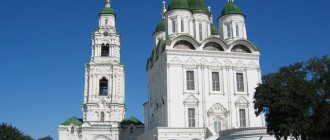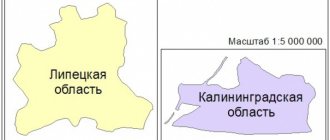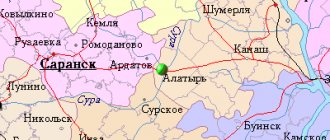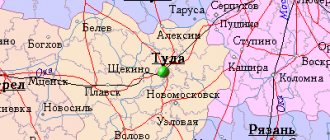Usually a house is built from a stove, a city from a large reservoir, a fortress from the relief, and only the Buryat Kyakhta was built in the steppe, where a person would never settle of his own free will. The answer is simple: here was a border checkpoint on the Great Tea Road. For a long time, it was in this miniature town that all Russian trade with the Middle Kingdom took place. They say that the local residents were so rich that they had difficulty finding hired workers - no one wanted to serve their neighbor. But most importantly, caravans of great travelers who dared to explore mysterious Asia passed through Kyakhta.
City by royal decree
Kyakhta can be called the “brother” of St. Petersburg: both were built by the will of Peter the Great. The appearance of a city on the outskirts of the empire corresponded to the interests of the state. In the 17th century, diplomats undertook several reconnaissance expeditions and official embassies to China to establish the border and trade relations between Russia and the Middle Kingdom. In 1689, the states concluded the Treaty of Nerchinsk. Official trading has begun.
On July 5, 1725, Savva Raguzinsky was appointed plenipotentiary ambassador to China in St. Petersburg.
sava_vladislavic_raguzinski.jpeg
Savva Ragudzinsky.
Engraving. Author unknown. Source: wikipedia.org His candidacy was successful: he showed extraordinary talent as a diplomat, perseverance and statesmanship. In a short time, Raguzinsky established contacts with China, deftly maneuvering between Beijing nobles and cunning merchants.
On August 20, Russia and China signed an agreement called Burinsky, after the site of the Russian ambassador’s camp on the Bura River, which established the southern border. It went from Kyakhta to the upper reaches of the Yenisei to the west and to the Gorbitsa river to the east. 63 lighthouses were installed along the border as border markers. They looked peculiar: stone mounds in which they buried a note stating that there was a border here, in Russian and Chinese. And on both sides there was a neutral strip of land, having a width, “according to the convenience of local conditions, from 5 to 30 fathoms.”
The question of border security immediately arose. Raguzinsky assigned a large role to the Buryats, who were famous as excellent shooters, riders and “pathfinders” who were able to distinguish the tracks of horses and cattle crossing the border. On the initiative of Savva Lukich, 15 guards from the Buryats of the Selenga and Khorin clans were recruited to protect the Trans-Baikal borders of Russia.
big_coppia_pannelli_1.jpg
Watercolor Paper on canvas.
China, Qing dynasty, 19th century Without wasting any time, Raguzinsky ordered the construction of the New Trinity Fortress. The fortress was founded in the steppe on the banks of the Kyakhta River. Once upon a time there was a Russian guard post at Barsukovskoe winter quarters. The fortress project was also developed by Savva Lukich. The outpost was named in honor of Trinity Day, when it was founded, and later it turned into the city of Troitskosavsk. And since 1934 it began to be called Kyakhta in the Buryat manner.
The German traveler Peter Simon Pallas wrote: “ ...Kyakhta residents did not win in their reasoning the place itself, which, in addition to being sandy and stone, is also not suitable for any vegetable gardens.”
According to the memoirs of travelers, the shallow water of the river was the main problem of the village.
Even in summer rains, “you can cross it without getting your feet wet, so you can hardly even call it a river.” Pallas wrote that on the territory of Kyakhta there was only one well “in which the water is pure, but it, like the others, is not without error.”
Rich merchants, “like strong tea drinkers,” were allowed by the Chinese to enter their territory “to take clean water from the spring on the banks of Kyakhta...” But the lack of water did not frighten the local inhabitants. The main thing is that money flowed here. So, in 1862, four thousand people lived in the settlement. Of these, 276 were merchants. Of the 165 trading houses, 60 belonged to merchants with a turnover of more than five million rubles a year.
And on the other side…
On the other bank of the Kyakhta River, 120 sazhens (less than 300 meters), at the same time as Troitskosavsk, the Chinese Maimachen was built. The question is, why? Until the beginning of the 20th century, China was an extremely closed country. Europeans were not expected there, and government caravans were allowed through from border Russia only three times a year. They were led by trusted merchants. Each was assigned a government commissar, four kissers and a guards officer with a hundred Cossacks. Now you can get from Moscow to Beijing by train in 6 days, by plane - in 8 hours, but at the beginning of the 18th century the journey took a year. Plus a year for the return journey and another one to form a new caravan. Needless to say, rare lucky people could become merchants of this caravan?
Kyakhta
(The Republic of Buryatia)
OKATO code:
81233501
Founded:
1727
City since:
1805 City of district subordination (Kyakhtinsky district of the Republic of Buryatia)
Center:
Kyakhtinsky district
Telephone code (reference phone)
| 30142***** | 91-2-22 |
Deviation from Moscow time, hours:
5
Geographic latitude:
50°21′
Geographic longitude:
106°27′
Altitude above sea level, meters:
760 Sunrise and sunset times in the city of Kyakhta
kyahta_5.jpg
Kyakhta.
Photo: Scientific archive of the Russian Geographical Society The bargaining looked like in the Stone Age, exclusively goods for goods. Russia traded household items, fabrics, spices, and tea for furs. Private commercial transactions were possible only in Maimachen.
The city looked like a regular quadrangle, surrounded by a palisade; from the inside, from north to south, it was divided by three parallel streets. One of the city's gates faced Kyakhta, others - towards Urga, as Ulaanbaatar was then called.
1929161_original.jpg
Street in Maimaichen with a shrine in the background.
1849-1850. Drawing from the album “China Border”. Mather K.P. The order in Maimachen was similar to a monastery: Chinese laws prohibited women from settling outside the Great Wall, so only men lived there. Merchants with their northern neighbor were literally raised here: teenagers aged 12–14 were brought to Maimachen, taken into service in shops, and taught the Russian language. After 3-4 years, they were allowed to trade and start families in the Middle Kingdom. Outside traders sometimes appeared, but they were also obliged to first learn Russian. This was done specifically to protect Chinese interests: it was believed that if Russian merchants mastered Chinese, they would be able to eavesdrop on secrets related to trade.
1926809_original_1.jpg
Kyakhta.
Gostiny Dvor. 1890s. Photo: Jules Legras Trade in Maimachen and Kyakhta intensified in December, January, February and March, when large quantities of goods arrived. After the Chinese New Year there was a “lucky day”, or a trading holiday, when all trading Chinese always tried to make some profitable trade deal, believing that this would ensure good luck for the whole year. Usually, for wholesale trade, the Chinese went to Kyakhta, where they inspected samples at the exchange yard and often concluded a trade deal here. Most often, the Chinese went straight to the houses of Russian merchants and there, over lunch or a cup of tea, they agreed on “what goods the Russian intends to take for his own,” and agreed on the quantity of goods to be bought and sold, transportation and other expenses. Having agreed, the seller and buyer went to the barn, and then to Maimachen. There the Russian chose “the goods he liked best,” set aside the ones he needed, and left someone to guard them.
Industry
In December 1880, Kyakhta merchants formed the “Kyakhta Steamship Partnership” on faith. In February 1881, the partnership acquired all the property of the Baikal Shipping Company, and also assumed obligations to organize a postal and passenger shipping company through Baikal. In 1892, the Partnership had 6 steam ships, 14 barges and 4 half-barges at its disposal. For the maintenance of regular steamship flights across Lake Baikal from the village of Listvenichny to the piers in Mysovaya or Boyarskaya and five navigation flights to Verkhne-Angarsk, the Partnership was annually paid a subsidy from the treasury in the amount of 33,938 rubles. In April 1895, the shipping company became the property of the Kyakhta merchant A. Ya. Nemchinov.
Since 1885, the Kiran salt plant operated on Lake Kiranskoye.
At the end of 1939, the Kyakhtinsky District Industrial Plant was created. At the end of 1940, the plant had 7 workshops: furniture, cooperage, toy, shoemaking, etc.
Food industry enterprises operate in Kyakhta.
1927819_original.jpg
Kyakhta and Maimachen.
1890s. Photo: Jules Legras Meanwhile, trade with China grew. In 1800, a little more than 900 tons of tea were brought from China to Russia, and in 1820 - already more than 1,600 tons. At the end of the 1830s, purchase volumes increased to 2,500 tons! Under Alexander III, 27% of Chinese tea was shipped to Russia (to the USA - 13.7%, to England - 57.7%).
In 1808-1809 60 “first-class” merchants, their commission agents and clerks, representing 16 cities of Russia, traded here. By the beginning of the 19th century, the Siberian tea route had finally taken shape. Sloboda Troitskosavsk began to resemble not a populated area, but a trading post. Only merchants and their clerks lived in it, since at the end of the 1770s, when the business passed into the hands of the richest merchants, people who did not participate in wholesale trade were evicted.
Kyakhta was the most desirable place for business-minded, capitalist and adventurous people. Within a year, some merchants rose from the 3rd to the 1st guild. Many created their own powerful tea companies.
Culture
Music
Around the 1840s, the piano became widespread among merchant families in Kyakhta. The exiles who taught music in the 1840s and 1850s were Konstantin Osipovich Savichevsky, P. Slivovsky, Anna Kraevskaya. 8-year-old Serafima Savvatyevna Skornyakova, the mother of pianist A.V. Sabashnikova, studied with K. O. Savichevsky.
In the early 1850s, with the assistance of A.I. Despot-Zenovich, the Kyakhta Instrumental Orchestra was created. There was also a singing choir, the exact date of its origin is not known. The choir organized special singing classes, where choristers studied the basics of music theory and practiced voice training. The choir's repertoire was based on spiritual compositions. The choir was involved in conducting services in the Church of the Resurrection. The choir was maintained until the 1890s.
On January 7, 1858, the “Kyakhta Commercial Assembly” (club) opened. The instrumental orchestra was placed at the disposal of the commercial collection. The orchestra played during balls hosted by the congregation.
Theater
The first theatrical performance in Kyakhta can be dated back to November 26, 1805. The notes of F. F. Vigel report that members of the embassy to China staged a French farce in honor of the name day of Count Yu. A. Golovnin.
In 1842, the play “The Moon and Poems” was published in the magazine “Son of the Fatherland”: “A Chinese comedy in one act, based on a true incident, written in Kyakhta and delivered to St. Petersburg in a tea box.” The play was signed by Ivan Ivanov, Derevyashkin's son. According to the assumption of E. D. Petryaev, A. I. Orlov, a former Kyakhta doctor, could be hiding behind this pseudonym.
In the 1880s - 1890s, the Lushnikov and Sinitsyn families organized amateur theatrical performances. They staged plays by A. N. Ostrovsky, A. A. Potekhin, A. I. Sumbatov-Yuzhin. Rehearsals took place either in the Public Meeting or in the apartment of the performance organizers. The life of the Kyakhta rich people is shown in the play “On the Surface” by I. A. Goryainov, who lived in Troitskosavsk from the mid-1880s.
In 1898, a drama club appeared at the Kyakhta Club of Clerks. Performances were also staged in the premises of the Kyakhta Commercial Assembly. Theater clubs appeared in the women's gymnasium and real school.
In 1941, the drama theater began operating.
Museums
- In 1890, the Kyakhtinsky Museum of Local Lore was created. V. A. Obrucheva.
- Museum of Russian-Mongolian Friendship (8-30-142) 91879
- House-Museum Safe Apartment of Sukhbaatar (8-30-142) 92333
- Museum of History, Culture and Art of Buryatia (8-30-12) 213722
tee-3057645_960_720.jpg
Photo: pixabay.com
“... before we had time to take off our frock coats, they themselves came into the room in which I was staying with Matusovsky, four of them. Approaching us and greeting us in Russian, they took turns shaking hands as casually and simply, as if we were their old friends and as if they were visiting us for the hundredth time. Immediately we smelled a strong odor of garlic and opium smoke; nevertheless, I was very happy about their visit, because I wanted to see these representatives of an interesting people as soon as possible, and I began to examine them themselves, their clothes and shoes, even with more unceremoniousness than they treated us, because for them Russian people were no longer a curiosity.”
Pavel Pyasetsky, “Travel to China 1874-1875.”
20-30 families lived in Kyakhta and had everything or almost everything that, by the standards of the 19th century, constituted the well-being of the rich. “The wives and daughters of the merchants, according to the witness, shone with rich outfits, natives of the Kuznetsky Most,” and “each estate consisted of several houses with barns, stables and resembled the estates of Russian landowners,” -
This is how the famous scientist and traveler Vladimir Obruchev recalled Kyakhta. Houses were built either wooden or half-stone, with a stone bottom and a wooden bottom. Merchants preferred wooden residential buildings, dry, warm and “breathable”. They were all “spacious and well built.” The merchants had their own club, gardens, musicians, choir and lived “in grand style.” Someone called Troitskosavsk “sandy Venice”, someone “Klondike”, and someone “Moscow-in-the-East”. Decembrist Nikolai Bestuzhev visited here several times and dubbed the settlement “Zabalui-gorodok”.
Mass media
Newspapers
In 1862, the weekly newspaper “Kyakhtinsky Listok” began to be published. Editor P. S. Andrutsky. The newspaper publishes information about the export of tea. Before the publication of the newspaper, information about trade was published in the circular “Commercial information from agents of merchants trading in Kyakhta.” Since May 9, 1896, the former Nerchinsk journalist I.V. Bagashev published a leaflet of the “Kyakhta Agents of the Russian Telegraph Agency”.
On June 1, 1897, the first issue of the Baikal newspaper was published in Troitskosavsk. Publisher-editor of the newspaper I. V. Bagashev. The newspaper was published until 1906. After the organization of the Far Eastern Republic, the newspapers “Sickle and Hammer” and “Izvestia of the Troitskosavsky Revolutionary Committee” were published.
In Soviet times, the regional newspaper “Lenin's Banner” was published, according to some information, the editorial office of which still exists to this day.
Currently, the municipal newspaper “Kyakhtinskie Vesti” is published weekly on Wednesdays, the printed organ of the administration of the Kyakhtinsky district.
Radio
- 70.16 Radio Mayak (Silent)
- 71.96 Radio Russia / Buryat Radio
- 106.3 Radio Russia / Buryat Radio
- 107.9 Barguzin FM (PLAN)
Internet media
- Kyakhta News (Kyahtanews.ru)
- news from the Kyakhta region
(unspecified)
(inaccessible link). Archived from the original on January 10, 2021.
1928062_original.jpg
Postcard of Kyakhta, late 19th century
In 1857, Karl Marx analyzed the phenomenon of Russian trade with China in an article that he published on the front page of the New York Daily Tribune. The German economist introduced American readers to our realities: “This trade, which takes place at a kind of annual fair, is managed by twelve intermediaries, of whom six are Russian and six Chinese; they meet in Kyakhta and, since trade is exclusively barter, they establish norms by which goods supplied by each side must be exchanged. On the Chinese side, the main item of trade is tea, on the Russian side - cotton and woolen fabrics. In recent years this trade has apparently increased significantly. Ten or twelve years ago the amount of tea sold to the Russians in Kyakhta did not exceed an average of forty thousand boxes; however, in 1852 it already amounted to one hundred and seventy-five thousand boxes...”
City coat of arms
Coat of arms of Troitskosavsk
The coat of arms of the city of Troitskosavsk, Irkutsk province, was approved on July 20, 1846 by the Highest Decree of Emperor Nicholas I.
Description of the coat of arms:
The shield is divided into two parts, in the upper, smaller one, in a silver field - the Irkutsk coat of arms ("In the silver field of the shield there is a running babr, and in his company there is a sable"), and in the lower, spacious one - in a blue field there is a cornucopia, from which gold coins rain down; on the sides of it, in sandy soil, on the left is a Cossack, and on the right are Buryats, both on horseback.
The word babr, when creating the coat of arms based on a verbal description, was misinterpreted by the artist. Instead of a tiger, the coat of arms depicts an animal that looks like a beaver with a wide tail and webbed feet.
At the bottom of the coat of arms is a cornucopia, which symbolizes trade with China. Mounted Cossacks and Buryats indicate the border position of the Troitskosavsk fortress.
Coat of arms of Kyakhta
On December 22, 1861, the coat of arms of the Kyakhta city government was approved, which became the coat of arms of Kyakhta.
Description of the coat of arms:
"In the azure shield is a golden severed dragon's head, with scarlet eyes and tongue, and accompanied by four golden shingles (ingots)." The full dragon symbolizes China, and the dragon's head symbolizes the cities that traded with China.
kyahta_6.jpg
Kyakhta.
Photo: Scientific archive of the Russian Geographical Society There was a lot to study. Kyakhta is the only city in the Russian Empire that was self-governing. One resident of Kyakhta accounted for 150 times more taxes than the average for the empire, but almost a quarter of the city budget was spent on education. In a tiny town, even by the standards of the 19th century, there were nine educational institutions! Among them: a real school, a women's gymnasium, a women's parish school, a four-year city school.
Gateway to Asia
It so happened that all major domestic expeditions to study Central Asia went through Kyakhta: Nikolai Przhevalsky, Pyotr Kozlov, Vladimir Obruchev, the Potanins, Gombozhab Tsybikov and others.
Nikolai Mikhailovich Przhevalsky, returning from his long journey to Central Asia: “ ... we finally saw the white spitz of the Kyakhta churches - the first symbol of our Motherland.”
Kyakhta, despite all its originality, was for Russian scientists and travelers a point on the border of the known and unknown worlds.
Education
In 1811, a parish district school was opened in Troitskosavsk. The main subject was the Law of God.
On September 15, 1812, the Troitskosavskoye 1st Higher Primary School opened. It closed after 1918.
In 1820, a school was created in the city to teach blacksmithing, shoemaking, and stone crafts with donations from burgomaster N.M. Igumnov, merchants and townspeople of Troitskosavsk.
In 1829, the Trinity Assumption Parish School opened.
In 1833, the Russian-Mongolian school began operating in Troitskosavsk. The school trained the command staff of the Buryat Cossack regiments. Cossack children aged 11-12 years old studied, mostly Buryats, sometimes Russian boys were accepted. The Mongolian language and the basics of Buddhism were taught as additional subjects. The school had 2 wooden buildings. Those who received an education at school served as clerks, police officers, translators, and primary school teachers. In 1851 the school was moved to Selenginsk.
In 1835, a Chinese language school was opened at the Kyakhta customs house. The training lasted 4 years. In addition to the Chinese language, the school taught: jurisprudence, bills of exchange, commercial law, and accounting. There was a preparatory school at the school.
In 1861, at the expense of the merchant of the first guild, Yakov Maksimovich Pyatovsky, the Intercession parochial school was opened.
In 1862, the Troitskosavsk women's gymnasium named after Count N. N. Muravyov-Amursky opened. In 1886, the pro-gymnasium received the status of a full 7-year gymnasium. In 1896, the 8th pedagogical class was opened. In 1923, the gymnasium was transformed into a second level school.
On September 20, 1876, a real school opened in the city. On July 11, 1877, it was named Alekseevsky in honor of Grand Duke Alexei Alexandrovich. In 1881, its own building was built for the school.
In 1886, the Troitskosavsky Syrup Craft School named after the actual state councilor Yakov Andreevich Nemchinov was opened. The school taught tailoring, shoemaking and carpentry.
On January 7, 1896, Sunday school classes for girls began in the building of the Assumption Parish School. On August 31, 1897, a women's parish school was opened at the expense of the merchant of the 1st guild, Matvey Vasilyevich Shishmakov.
In 1900, in the settlement of Kyakhta there was a private school for Pelageya Ivanovna Nemchinova. There were 22 boys and 18 girls studying at the school. The school followed the program for private schools recommended by the Ministry of Public Education.
In 1935, the Kyakhta school-type orphanage was created. In 1945, 239 children were raised in the house.
In 1947, a Cultural and Educational School was created on the basis of the political education school. In 1960, the school was transferred to Ulan-Ude and reorganized into the Cultural and Educational School.
Currently, there is a medical school in the city. The Olympus sports complex was also built.
f18_o7_566a_2.jpg
Photo: Scientific archive of the Russian Geographical Society
“The Kyakhta people tried to acquaint us with all aspects of Chinese life, and since they themselves are great hunters of dining with the Chinese, they arranged dinner for us with a merchant who came to invite us. Since I will still have the opportunity to talk about a Chinese dinner, I will not describe it now, but will only say that I not only did not find Chinese dishes as disgusting as they are accustomed to believe from the incorrect stories of some travelers, but many, on the contrary, They seemed very tasty to me, and in general I completely calmed down about my food in China. For a lover of strong drinks and wines, it’s really bad here: there is terrible poverty in choice, and everything is of poor quality. Also not bad is warmed up alcohol with the scent of roses, served at dinner in tiny cups.”
Pavel Pyasetsky, “Travel to China 1874-1875.”
Transbaikal Cossacks not only guarded the border with China and Mongolia, guarded government facilities and escorted convict parties, but also accompanied scientific and diplomatic missions. Thus, the Cossacks guarded the expeditions of Nikolai Mikhailovich Przhevalsky to China, Mongolia and Tibet.
“The newly arrived Cossacks turned out to be the most zealous and devoted people throughout our long journey. We soon became close friends with these good people, and this was an important guarantee for the success of the business. At a terrible distance from our homeland, among people who were alien to us in everything, we lived as siblings, sharing labors and dangers, sorrows and joys together. And to the grave I will retain grateful memories of my companions, whose boundless courage and dedication to the task determined the entire success of the expedition,” Przhevalsky noted in his diary.
przhevalskiysite.jpg
Nikolai Przhevalsky, wikipedia.org
“Finally, after all the day’s work, the exhausted, chilled and tired Cossacks usually took turns, also in bad weather, for two night guard shifts. In a word, the service of the Cossacks was extremely difficult, but they behaved well and strictly fulfilled their duty,”
- Przhevalsky also wrote in his book about a trip to the foothills of Tibet. And the Cossack constable, Buryat Dondok Irinchinov, became the researcher’s faithful companion, accompanying him on four expeditions. For which he was awarded a bronze medal of the Russian Geographical Society. Transbaikal Cossack Panteley Teleshev in the 4th expedition N.M. Przhevalsky participated as a specialist preparator. For the discovery of a new species of lark he was awarded a small silver medal.
Researcher and scientist Nikolai Przhevalsky wrote: “These adversities affected the Cossacks even more strongly. At the bivouac, two of them tended the caravan animals, often in pouring rain or a strong snowstorm. The attendant and the cook made tea and lunch in the same rain or snow.”
But this tea was very unusual. The harsh climate and local traditions accustomed the Cossacks to a hearty energy drink - slivan. Butter, raw eggs, flour, lard and even hemp seed were added to it. It was customary to throw a hot pebble “stallion” into a mug of tea to increase the “degree”. After drinking tea like this, the person warmed up and remained full all day. To prepare this dish, we used “brick” tea in pressed bars, which was brought from China. This tea was so valuable that it was used as an alternative currency.
1930038_original.jpg
View of Maimaichen and Kyakhta. 1849-1850 Drawing by Karl Mather
“Finally we were leaving for the Russian border. Heterogeneous thoughts and feelings fill a person’s soul when he goes to a foreign country for a long time. <…> All the carts with transport, three Chinese carts, left, and we followed them, placing ourselves in different carriages of our compatriots who saw us off.
Soon Kyakhta and Mai-mai-chen were left behind, and in front of us stretched the spacious Mongolian steppe, all green, only with reddish sandy paths running along it in different directions; on the horizon, in the southeastern part, blue jagged mountains rose, and above them hung heavy clouds, almost as blue as the mountains shaded by them.”
Pavel Pyasetsky, “Travel to China 1874-1875.”
To this day, the grandson and great-grandchildren of Alexander Bokhin, a member of the Tibet expedition of Pyotr Kozlov, live in Kyakhta. The famous traveler is the godfather of his daughter Catherine. In 1909, through Kyakhta, he returned from the fifth expedition to Central Asia. The area is also home to the descendants of Tsokto Badmazhapov, who gave Pyotr Kuzmich information about the city of Khara-Khoto, lost in the sands. Also living in the area are the descendants of Dondok Irinchinov, the translator of Nikolai Przhevalsky, who participated in all four of his expeditions.
Decline of Kyakhta
In 1869 the Suez Canal was opened. He opened a shorter and more convenient route for the delivery of goods from China, including tea. The cash flow that Kyakhta passed through began to decrease - expensive varieties of long tea were transported by sea, while cheap varieties, widely used in Russia, continued to be transported through Kyakhta. At the end of the 1890s, construction of the Trans-Siberian Railway was completed. All goods now went by rail, and Kyakhta remained far from the new artery of life. Gostiny Dvor in the city of “millionaires” was empty after the Russo-Japanese War. Nowadays, just over 20 thousand people live in Kyakhta, and only the picturesque ruins of the 18th–19th centuries remind of its former greatness.
Story
The city was founded in 1727 by the Russian diplomat S. L. Raguzinsky-Vladislavich. On his instructions, in accordance with the Burin Treaty, the Troitskosavsky fort was built on the site of the Barsukov winter quarters. The Trinity Church, erected inside the wooden fortress with the chapel of St. Sava the Serbian (heavenly patron of the fortress founder Sava Raguzinsky-Vladislavich), gave the name to both the fortress itself - Trinity - and the city - Troitskosavsk.
The city that grew up around the fortress was called Troitskosavsk until 1934, then it was merged with the trading settlement of Kyakhta and renamed.
The construction of Kyakhta was entrusted to Captain Knyazhnin with 30 soldiers. Later, 350 soldiers of the Yakut regiment and 30 Cossacks from Verkhneudinsk were sent to the construction. Several dozen workers arrived from the Ilimsky and Kabansky forts. In the settlement they set up 6 yurts and a large courtyard with 12 barns. The fortress was quadrangular, 100 fathoms long on each side, with towers at the corners and two gates. Inside, 32 huts were built for merchants, a guest courtyard with 24 shops and 24 barns. The construction of the Kyakhtinskaya Sloboda was completed in 1728.
The treaties concluded between Russia and China (Burinsky and Kyakhtinsky) not only determined peaceful relations between neighboring countries for many years, but also became fateful for the “wheatgrass place”, making it the main center of Russian-Chinese trade.
Cloth, textiles, fur goods and yuft were exported to China through Kyakhta; mainly tea was exported from China. Silk and cotton fabrics and porcelain products were delivered in small quantities. For a long time (about a century), it was Kyakhta that supplied tea to the whole of Russia and almost exclusively to Western Europe. Moreover, here we called this Chinese tea Kyakhta, and abroad - Russian.
In 1743, Kyakhta received the status of a trading settlement.
In 1774, a decree was issued on the establishment of a magistrate or town hall in Kyakhta.
In 1792, customs from Irkutsk was transferred to Kyakhta.
In 1796, a decree was issued on the construction of a road from Irkutsk to Kyakhta, which was called the Circum-Baikal Tract or the Krugomorsky Tract.
In 1805 Troitskosavsk received city status. In 1829 there were 4,054 inhabitants and 542 houses.
House of the merchant and public figure A. M. Lushnikov
At the beginning of the 19th century, the Trinity Fortress was demolished.
In 1851, a city government was introduced in Troitskosavsk.
In the 19th century, Troitskosavsk, a wealthy merchant city, was called by its contemporaries Sandy Venice and Zabalui-gorodok. From the last quarter of the 19th century, after the construction of the Suez Canal, when most of the imports to China began to be sent by sea, the importance of Kyakhta trade began to decline. It decreased even more with the construction of the Chinese Eastern Railway (1903). Kyakhta lost its significance as the main point of trade with China and became the center of Russian trade with Outer Mongolia.
In 1907, the 26th East Siberian Rifle Regiment arrived here, part of the 7th East Siberian Division, which distinguished itself in the battles for Port Arthur. His St. George Banner is currently in the Irkutsk Regional Museum of Local Lore.
In Kyakhta, the journeys of Central Asian explorers began or ended - N. M. Przhevalsky, P. K. Kozlov, G. N. and A. V. Potanin, V. A. Obruchev and others.
History of trade development
Revolution of 1905-1907
On December 15 (new style), 1905, on the initiative of the Troitskosavsky branch of the All-Russian Union of Teachers, a meeting of students of Troitskosavsky educational institutions was convened. The meeting stated that “the manifesto of October 17 not only did not bring the expected calm to public life, but on the contrary, thanks to the reactionary activities of the government, the revolutionary liberation movement reached extreme tension.” The meeting decided to stop classes until more favorable conditions arise.
On December 22, 1905, the Kyakhta newspaper “Baikal” published a letter from the Union of Printing Workers of the city of Troitskosavsk, in which it was reported that the Troitskosavsk printing workers, “imbued with the idea of the general liberation movement of our long-suffering people,” called on the employees of Vtorov’s store, as the strongest in the city corporation of clerks, to strike for no more than 4 days. The clerks refused to participate in the strike.
On December 24, 1905, a public meeting was held in Troitskosavsk, at which several reports were read, including a report by teacher P. O. Matiyasevich on the strike of city teachers.
On December 27, 1905, a meeting of employees of local postal and telegraph offices (Troitskosavsk and Kyakhtinskaya) was held in Troitskosavsk. It was decided to organize a local branch of the postal and telegraph strike committee and send a representative to Chita to the congress of delegates of all postal and telegraph committees of the Transbaikal region, convened by the Chita postal and telegraph committee.
On January 5, 1906, in Troitskosavsk, a popular meeting decided to transfer mail and telegraph to the public with a strict boycott of government correspondence. The Troitskosavsk Duma joined in principle to this resolution. A Commission was organized for the general management of postal and telegraph business.
1910s
In January 1914, a congress of cooperators of Western Transbaikalia took place in Verkhneudinsk, at which the Pribaikalsky Trade and Industrial Partnership of Cooperatives “Pribaikalsoyuz” was created. After this, cooperative consumer societies “Economy” arose in Troitskosavsk, Mysovsk, and Barguzin.
On May 25, 1915, a tripartite Russian-Chinese-Mongolian agreement on the international situation of Outer Mongolia (Kyakhta Treaty of 1915) was signed in Kyakhta.
During the First World War, a camp for prisoners of war was created in Troitskosavsk. In the winter of 1915-1916, 6,700 prisoners of war were kept in the camp.
Revolution and civil war
On April 7, 1917, the Council of Workers' and Soldiers' Deputies was formed in Troitskosavsk. On May 3, 1917, a congress of delegates from the Troitskosavsky district and representatives of the Cossacks of the 1st military department began.
On June 17, 1917, a military congress of the Transbaikal Cossack Army took place in Troitskosavsk. The congress decided: all affairs of the army are managed by the “military circle”; the army is controlled by an elected ataman with a residence in Chita. The congress decided to “vigorously fight against blasphemers.”
In November 1917, Soviet power was established in Kyakhta. Konstantin Andreevich Maskov (1880-1918), a teacher at the Troitskosavsky Real School, was elected Chairman of the Troitskosavsky (Kyakhtinsky) Council of Workers', Peasants' and Soldiers' Deputies.
On September 3, 1918, Kyakhta and Troitskosavsk were occupied by the White Czechs. On September 22, 1918, K. A. Maskov was shot.
In August 1919, by order of the Main Directorate of Places of Detention of the Provisional Siberian Government
The Troitskosavsk temporary prison was created to house political prisoners. The prison is located 2 km from Troitskosavsk in the barracks of a former military town (Red Barracks). In the Troitskosavsk temporary prison there were prisoners from the Alexandrovsk convict prison, Biysk, Zlatoust, Krasnoufimsk, Kungur, Perm, Tobolsk, Chelyabinsk and other prisons. From December 24, 1919 to January 10, 1920, a mass extermination of prisoners was carried out in the prison, called the Trinity tragedy. After the restoration of Soviet power in Troitskosavsk on March 4, 1920, the prison ceased to function, and an investigative commission began to work to investigate the massacre of political prisoners.
In September 1918, a punitive detachment under the command of Ensign Palshin set out from Troitskosavsk. The detachment operated in the direction of the villages of Bichura, Okino-Klyuchey, Elani, Malaya Kudara, Urluk, Tamir. On August 25, 1919, a punitive expedition under the command of Colonel Makarenko left Troitskosavsk.
In January 1920, the city, at the invitation of the Troitskosavsk Duma, was occupied by Chinese troops. On February 22, 1920, Chinese soldiers surrounded the quarter occupied by the Revolutionary Committee and its detachment. A meeting of city residents took place on the market square and headed to the premises of the Revolutionary Committee. The demonstration was shot down by Chinese soldiers. 7 people were killed, 14 people were injured. On February 27, 1920, negotiations began in Ust-Kyakhta between the delegation of the Central Executive Committee of the Baikal region and the Chinese command on the evacuation of Chinese troops from the Troitskosavsky region.
In 1920-1921, Kyakhta was the center of the revolutionary activities of Sukhbaatar and Choibalsan. On March 1, 1921, the 1st Congress of the Mongolian People's Party took place in Kyakhta. On March 18, 1921, the Mongolian village of Altan-Bulak, neighboring Kyakhta, was liberated from Chinese troops by the Mongolian militia.
On May 21, 1921, Baron von Ungern issued order No. 15 to “Russian detachments on the territory of Soviet Siberia,” with which he announced the start of a campaign on Soviet territory. In the spring of 1921, the Asian Division was divided into two brigades: one under the command of Lieutenant General Ungern, the other under Major General Rezukhin. The latter was supposed to cross the border near the village of Tsezhinskaya and, operating on the left bank of the Selenga, go to Mysovsk and Tataurovo along the Red rear, blowing up bridges and tunnels along the way. Ungern's brigade attacked Troitskosavsk, Selenginsk and Verkhneudinsk. This brigade was defeated in the battles for Troitskosavsk on June 11-13, 1921.
Soviet period
On March 15, 1924, long-distance telephone communication began between the cities of Verkhneudinsk, Novoselenginsk and Troitskosavsk.
In 1925, the Troitskosavsky City Council was created.
In 1956, a bust designed by A.I. Timin was erected at the grave of A.V. Potanina.

